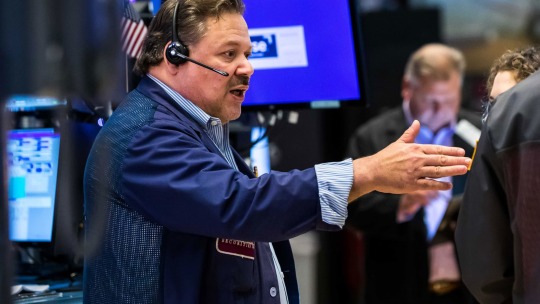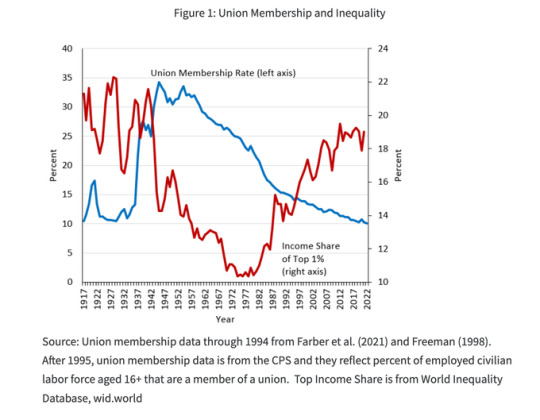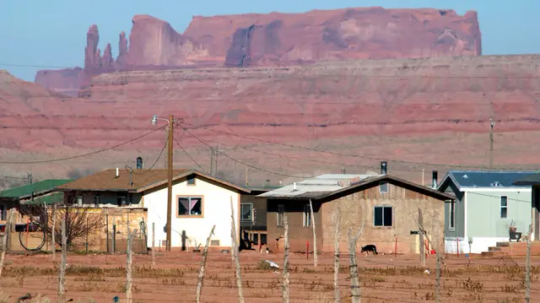#U.S. 10 Year Treasury
Text
Mortgage rates fall sharply to under 7% after inflation eases
Mortgage rates fall sharply to under 7% after inflation eases
Mortgage rates fell sharply Thursday after a government report showed that inflation had cooled in October, prompting a decline in bond yields.
The average rate on the 30-year fixed plunged 60 basis points from 7.22% to 6.62%, according to Mortgage News Daily. That matches the record drop at the start of the Covid 19 pandemic. The rate, however, is still more than double what it was at the start…

View On WordPress
0 notes
Text
10-year Treasury yield in focus ahead of Fed meeting
10-year Treasury yield in focus ahead of Fed meeting
The 10-year Treasury yield rose to its highest level in more than a decade as investors continued to assess the prospect of the Federal Reserve taking the most aggressive step yet in its fight to lower soaring inflation.
The yield on the benchmark 10-year Treasury note was last up 11 basis points to 3.483% as it notched a high not seen since April 2011.
Meanwhile, the 2-year yield jumped nearly…
View On WordPress
#10year#ahead#Bonds#Breaking news#Breaking News: Markets#business news#Central banking#Economic events#Fed#Focus#Government debt#Markets#Medium Term Notes#Meeting#prices#Treasury#U.S. 10 Year Treasury#U.S. 30 Year Treasury#U.S. Economy#World Markets#yield
0 notes
Text
5 things to know before the stock market opens Wednesday, May 18
5 things to know before the stock market opens Wednesday, May 18
Here are the most important news, trends and analysis that investors need to start their trading day:
1. Stock futures fall as inflation claims another retailer
Traders on the floor of the NYSE, May 17, 2022.
Source: NYSE
U.S. stock futures dropped Wednesday as rising inflation slammed another retailer. Target sank 24% in the premarket, shortly after a big earnings miss. A similar profit…

View On WordPress
#Business#business news#Dow Jones Industrial Average#Economy#Federal Reserve System#Health care industry#Home Depot Inc#Interest Rates#Investment strategy#Jamie Dimon#Jerome Powell#JPMorgan Chase & Co#Lowe&x27;s Companies Inc#Markets#NASDAQ Composite#Politics#S&P 500 Index#Target Corp#Technology#U.S. 10 Year Treasury#Walmart Inc#WTI Crude (Jun&x27;22)
0 notes
Text
[Calcalist is Private Israeli Media]
"We have a huge deficit of ammunition not just in Ukraine but all over the world. We understand we should produce this here in Ukraine because all around the world it’s finished, it’s depleted. All the warehouses are empty," said Ukrainian Prime Minister Denys Shmyhal to the "Financial Times" in October of last year, addressing the ammunition situation of the Ukrainian army, which is interconnected with the challenges faced by the IDF.
The increased ammunition usage in the wars in Gaza and Ukraine has led to an unprecedented global shortage of ammunition of all types. While the IDF tries not to address the issue publicly, Major General Eliezer Toledano admitted last month that the IDF is reducing air attacks, emphasizing the necessity to "manage the economy of armaments" because the war will last a long time. Prime Minister Benjamin Netanyahu also commented on the matter, stating that "we need three things from the U.S.: armaments, armaments, armaments." At a press conference two weeks ago, Netanyahu announced that Israel is preparing the Israeli defense industries to "cut off dependence on the world," a goal that is not realistic in any way.[...]
[L]ast week the Director General of the Ministry of Defense Eyal Zamir concluded a huge deal with the American government for the supply of aerial ammunition in the hundreds of millions of dollars, and so far over 25,000 tons of weapons have been sent to Israel since the beginning of the war in about 280 aircraft and about 40 ships. The Israeli defense industry is also tasked with filling the IDF's stocks. About two weeks ago it was published in Calcalist that the Israeli companies postponed the supply of weapons worth more than $1.5 billion to their customers across the world to divert resources for the IDF's combat needs and that in the last three months, the Ministry of Defense ordered more than NIS 10 billion ($2.7 million) worth of weapons from them. It should be noted that the shortage does not stem from a lack of budget but from a lack of supply, and the Treasury does not restrict the IDF from purchasing ammunition of any kind.
The tremendous need for armaments stems from the unusual amount of bombings that the IDF has carried out in Gaza since the outbreak of the war. Two weeks ago, the army announced that 30,000 targets had been attacked in Gaza. A security source told Calcalist that the rate of fire the IDF is using in the current war is similar to that of a "superpower," is comparable only to the capabilities demonstrated by the U.S., and probably also exceeds the number of armaments of the Russians in the campaign against Ukraine.[...]
Another reason [for the increase in targets bombed] is that in the current war, the IDF adopted a policy of a lighter finger on the trigger [sic] regarding damage to infrastructure and Hamas operatives who are in a civilian environment, thus increasing the ability to hit targets that were not previously attacked. In addition to these reasons, there is also the added pressure from the political level, as well as from the [Israeli] public, who demand an increase in air force bombing to prevent as much as possible a risk to the forces on the ground.[...]
[O]ne should ask whether, considering the existing ammunition stockpile, this policy may not harm the IDF's readiness to carry out future missions, especially given the existing security challenges and the probable scenario in which the IDF will be forced to [sic] carry out an attack in southern Lebanon as well. The IDF may be forced to better clarify its limitations to the politicians to avoid reaching an extreme scenario of an ammunition shortage, or in the words of General Toledano: "There is no infinite army."
28 Jan 24
319 notes
·
View notes
Text
By Jake Johnson
Common Dreams
Aug. 29, 2023
"The evidence presented in Treasury's report challenges the view that worker empowerment holds back economic prosperity," a department economist wrote.
A report released Monday by the U.S. Treasury Department argues that labor unions are critical to combating income inequality, which has risen dramatically in recent decades as union membership has declined and real wages have largely stagnated.
The report estimates that unions boost the wages of their members by between 10% and 15%, an impact that spreads to the broader economy as nonunion workplaces compete for employees.
"Unions also improve fringe benefits and workplace procedures such as retirement plans, workplace grievance policies, and predictable scheduling," the report notes. "These workplace improvements contribute substantially to middle-class financial stability and worker well-being. For example, one study has estimated that the average worker values their ability to avoid short-notice schedule changes at up to 20% of their wages."
In a summary of the report's findings, Treasury Department economist Laura Feiveson wrote that "increased unionization has the potential to contribute to the reversal of the stark increase in inequality seen over the last half-century."
"All in all, the evidence presented in Treasury's report challenges the view that worker empowerment holds back economic prosperity," wrote Feiveson. "In addition to their effect on the economy through more equality, unions can have a positive effect on productivity through employee engagement and union voice effects, providing a roadmap for the type of union campaigns that could lead to additional growth."

The Treasury Department report was released less than a week after UPS Teamsters ratified a five-year contract that includes substantial wage increases, a deal secured after the union threatened a nationwide strike.
The United Auto Workers (UAW) union is also looking to win a major pay increase for General Motors, Ford, and Stellantis employees. Last week, 97% of UAW members who participated in the vote opted to authorize a strike if contract talks with the three automakers fail.
Meanwhile, Hollywood writers and actors are still on strike, and others across the country—including nurses, hotel workers, and city employees—have walked off the job in recent weeks to demand better pay, benefits, and conditions.
The wave of strikes followed significant labor victories in 2022, a year in which Starbucks employees organized hundreds of locations across the U.S.—victories that contributed to an increase in the total number of U.S. workers in unions last year.
The union membership rate, however, fell from 10.3% in 2021 to a record-low 10.1% in 2022 as nonunion jobs grew at a faster rate than union jobs.
In a Monday speech outlining her department's findings, Treasury Secretary Janet Yellen said that unions are "critically important to workers' well-being."
"Unionization also has spillover effects," Yellen added. "Competition means workers at nonunionized firms may see increased wages too. Heightened workplace safety norms can pull up whole industries. Benefits also spill over to workers' families and communities."
Our work is licensed under Creative Commons (CC BY-NC-ND 3.0). Feel free to republish and share widely.
50 notes
·
View notes
Text


700+ Civil War-Era Gold Coins Found Buried in Kentucky
A man unearthed a huge hoard of Civil War-era gold and silver coins on his Kentucky farm.
A Kentucky man got the surprise of his life while digging in his field earlier this year: a cache of over 700 coins from the American Civil War era.
The "Great Kentucky Hoard" includes hundreds of U.S. gold pieces dating to between 1840 and 1863, in addition to a handful of silver coins. In a short video, the man who discovered the hoard — whose identity and specific location have not been revealed to the public — says, "This is the most insane thing ever: Those are all $1 gold coins, $20 gold coins, $10 gold coins," as he aims his camera at the artifacts tumbling out of the dirt.


According to the Numismatic Guaranty Co. (NGC), which certified the coins' authenticity, and GovMint, where the coins were sold, 95% of the hoard is composed of gold dollars, along with 20 $10 Liberty coins and eight $20 Liberty coins. The rarest is the 1863-P $20 1-ounce gold Liberty coin. Just one of these coins can go for six figures at auction, and the Great Kentucky Hoard boasts 18 of them. NGC's website notes that the $20 Liberty coin, which circulated from 1850 to 1907, was minted by the Treasury Department after gold was discovered in California. The $20 Liberty coins in the hoard are even rarer because they do not include "In God We Trust," which was added in 1866 after the end of the Civil War.
Potentially more important, though, is what the hoard can tell us about America's history during an extremely tumultuous period.
Ryan McNutt, a conflict archaeologist at Georgia Southern University who has heard about but not seen the hoard, said in an email that "given the time period and the location in Kentucky, which was neutral at the time, it is entirely possible this was buried in advance of Confederate John Hunt Morgan's June to July 1863 raid."
Many wealthy Kentuckians are rumored to have buried huge sums of money to prevent it from being stolen by the Confederacy. James Langstaff left a letter saying he had buried $20,000 in coins on his property in Paducah, William Pettit buried $80,000 worth of gold coins near Lexington, and Confederate soldiers quarantined for measles reportedly stole payroll and hid it in a cave in Cumberland Gap. None of these caches has ever been recovered.


Considering the hoard coins are federal currency, McNutt said, it may be the result of a Kentuckian's dealings with the federal government — "dealings that it would be wise to conceal from a Confederate raiding party." Many Americans affected by the Civil War "became experienced with hiding goods and valuables," he said.
Most concentrations of historical artifacts found on private land end up going to market or being collected without archaeological consultation, according to McNutt. "As a conflict archaeologist, I find this loss of information particularly frustrating," he said. Hoards have an incredible amount of information about the person who collected the objects, offering archaeologists insight into a brief window in time.
Historical finds like these on private land in the U.S. do not need to be reported to an archaeologist. But McNutt, who has developed close relationships with landowners, believes that education and outreach are key to learning more about these rare coin caches.
"It is entirely up to the landowner," McNutt said, but not engaging with an archaeologist means "it's a snapshot of the past, lost forever."
By Kristina Killgrove.




#700+ Civil War-Era Gold Coins Found Buried in Kentucky#The Great Kentucky Hoard#gold#silver#treasure#gold coins#silver coins#collectable coins#rare coins#metal detecting#archeology#archeolgst#history#history news#jackpot#discover#discovered#discovery#lucky#lucky find
48 notes
·
View notes
Text

The Navajo Nation has received a $55 million grant to help Navajo homeowners with mortgage payments and home repairs.
Navajo Nation President Buu Nygren said as many as 901 homeowners should qualify for the funds.
The money comes from the American Rescue Plan Act, which provides nearly $10 billion to support homeowners throughout the country who face financial hardships due to the COVID-19 pandemic.
The program is open to Navajo homeowners of all income levels within the Four Corner states who live on both tribal lands and in urban areas.
The funds must be used within three years.

PHOENIX — Urban Navajos who own homes off the Navajo Nation will soon receive some unexpected help they’ll want but didn’t need to ask for.
On Sept. 11, Navajo Nation President Buu Nygren told 250 Phoenix metro area Navajo homeowners that the Nation received a $55 million federal grant to provide financial assistance to Navajo homeowners under various Homeowner Assistance Fund programs.
This includes mortgage payments and home repair assistance.
As many as 901 Navajo homeowners should qualify for the money for their homes, he said.
“Make sure we tell everybody,” Nygren told an overflow crowd in the shade outside the historic Phoenix Indian School Visitor Center, one of the remaining buildings from the 100-year-old Indian boarding school.
They were outside because a capacity crowd was already indoors awaiting the same announcement, and Nygren wanted to address those in the 105-degree F heat first.
The Homeowner Assistance Fund was authorized through the American Rescue Plan Act to provide $9.9 billion nationwide to support homeowners who face financial hardships associated with COVID-19, the Nygren said yesterday.
The funds were distributed to states, U.S. territories, and tribes. The Navajo Nation was awarded $55,420,097.
Most federally funded programs are restricted to low- and very-low-income households.
This program allows higher-income Navajo homeowners to receive financial relief from the economic effects of COVID-19, as well.
“Tell your relatives,” Nygren said. “Say the $55 million that came from our government was specifically for Navajo people who are homeowners.”
To launch the process, Nygren signed an agreement with Native Community Capital. The group is a Native-led and operated non-profit corporation that was selected as the sub-recipient to administer the Homeowner Assistance Fund Project activities on behalf of the Navajo Nation.
Native Community Capital is certified by the U.S. Department of the Treasury as a Native Community Development Financial Institution and is a licensed mortgage lender in Arizona and New Mexico.
The program is designed for both higher-income and medium-income homeowners, Native Community Capital CFO Todd Francis said.
As an example, a family of four in Maricopa County in Arizona earning as much as $132,450 a year may be eligible for the tax-free, non-repayable funds to pay their mortgage or repair their homes, he said.
The program will benefit Navajo relatives and their families who reside in both rural remote locations and those in the urban areas of Phoenix, Albuquerque, Denver, Salt Lake City, surrounding smaller cities and towns, and wherever Navajo homeowners live off-reservation, said NCC CEO Dave Castillo.
A significant lack of investment in tribal communities compared to non-Indian communities has resulted in a critical absence of homeownership on tribal lands, particularly for higher-income Native households, he said.
As a result, Navajos with higher incomes tend to purchase or build homes off the Navajo Nation where they can qualify for loans and mortgages to build equity and wealth.
The Center for Indian Country Development reports that 78% of Native people live outside of tribal trust land in counties surrounding their homelands. It is these families the HAF Project will seek to support, Castillo said.
Nygren said the Navajo HAF Project will provide financial assistance to 901 eligible Navajo homeowners to use for qualified expenses in five activities for the next 36 months.
The program will provide financial assistance to eligible Navajo homeowners in the four-state region of Arizona, New Mexico, Utah and Colorado.
Each eligible applicant could receive a maximum amount of $125,000 of combined assistance under various programs.
These include:
Monthly mortgage payment assistance to a maximum assistance level of $72,000 per participant. This is for Navajo homeowners who are delinquent in mortgage payments or at risk of foreclosure due to a loss of household income.
Mortgage reinstatement assistance would give a maximum assistance of $50,000 per participant to those who are in active forbearance, delinquency default status, or are at risk of losing a home.
Mortgage principal reduction assistance that would assist up to $100,000 for those who find the fair market value of their home is now less than the price they paid for it and now may result in a loss when it is sold.
Home repair assistance that would give $100,000 to those who need significant home repairs.
Clear title assistance of up to $30,000 for grant assistance to receive a clear title of their primary residence.
In his 2022 presidential campaign, Nygren committed to helping urban Navajos who have said for years that they felt underserved by the tribal government. He said this grant addresses that.
He said one of his administration’s next goals is to buy or construct a building owned by the Navajo Nation in the metro area to serve urban Navajo Phoenicians.
“Wouldn’t it be nice if we used the entire $55 million this year?” Nygren asked. “I know you committed to live here and to take care of your family. I see a lot of familiar faces and I understand this is where your jobs are. We want you to have access to resources.”
Castillo urged applicants to be sure their applications were complete and submitted early.
“One thing we want to emphasize is to be ready when the information is being requested on the checklist,” he said. “Make sure you have your documents prepared and you get it to our licensed professionals that will be working with you. If you do not, the application will expire in 30 days.”
He said the program has just three years to deploy the $55 million.
“It seems like we could do that quickly but we can only do it quickly if you help us, if you’re ready, and if you submit the information that’s necessary.”
Debbie Nez-Manuel, executive director of the Navajo Nation Division of Human Resources, said visits to other urban areas will be planned, scheduled, and announced by Native Community Capital.
The funds must be used within three years.
So does any of this money go to the Black Indians Tribes? @militantinremission
maybe y'all should start asking for your cut right now cause they got it
#Navajo#Navajo Nation#First Nation#Chief Buu Nygren#Nygren reveals $55 mil for Diné homeowners#HAF#The Center for Indian Country Development#Navajo Nation has received a $55 million grant to help Navajo homeowners with mortgage payments and home repair#@MilitantinRemission
15 notes
·
View notes
Text
5 things to know before the stock market opens Tuesday, May 24
5 things to know before the stock market opens Tuesday, May 24
Here are the most important news, trends and analysis that investors need to start their trading day:
1. Dow set to gave back some of Monday’s snapback rally
A screen displays the Fed rate announcement as a trader works inside a post on the floor of the New York Stock Exchange (NYSE) in New York City, U.S., May 4, 2022. REUTERS/Brendan McDermid
Brendan Mcdermid | Reuters
Dow futures fell more…
View On WordPress
#Abercrombie & Fitch Co#apple inc#Best Buy Co Inc#business#business news#Dow Jones Industrial Average#Economy#elon musk#Federal Reserve System#Health care industry#interest rates#Investment strategy#Markets#Nasdaq Composite#politics#S&P 500 Index#Snap Inc#technology#U.S. 10 Year Treasury#Zoom Video Communications Inc
0 notes
Text
SAN FRANCISCO (AP) — The Internal Revenue Service says Microsoft owes the U.S. Treasury $28.9 billion in back taxes, plus penalties and interest, the company revealed Wednesday in a securities filing.
That figure, which Microsoft disputes, stems from a long-running IRS probe into how Microsoft allocated its profits among countries and jurisdictions in the years 2004 to 2013. Critics of that practice, known as transfer pricing, argue that companies frequently use it to minimize their tax burden by reporting lower profits in high-tax countries and higher profits in lower-tax jurisdictions.
Microsoft, which is based in Redmond, Washington, said it followed IRS rules and will appeal the decision within the agency, a process expected to take several years. The company’s shares dropped slightly in aftermarket trading.
The IRS began an audit of Microsoft in 2007 that the agency described in federal court documents last year as “one of the largest in the Service’s history.” Microsoft says it was recently notified by the IRS that the audit has ended, starting a new process to resolve a dispute over how much is owed.
Part of the long-running IRS investigation centered on how Microsoft structured a manufacturing facility starting in 2005 in the U.S. territory of Puerto Rico. The IRS has said Microsoft hired accounting firm KPMG to set up a cost-sharing arrangement with the Puerto Rican affiliate that shifted taxable revenue out of the U.S.
The IRS has also looked at other affiliates, including one that involved retail sales in Asia, according to court documents.
A blog post Wednesday from David Goff, Microsoft’s corporate vice president for worldwide tax and customs, said the company has changed its corporate structure and practices since the years covered by the audit. But he said it’s not uncommon for large multinationals to use cost-sharing arrangements, and that because Microsoft’s subsidiaries shared in the costs of developing some intellectual property, they were also entitled to related profits.
Goff also said that the $28.9 billion sought by the IRS could be reduced by up to $10 billion because of taxes paid as a result of a 2017 tax law signed by then-President Donald Trump.
8 notes
·
View notes
Text
Breaking News: An IRS plan to overhaul U.S. tax collection aims to improve customer service and crack down on tax evasion by corporations and the wealthy.
The Biden administration has been focused on highlighting improved taxpayer service and responsiveness, but the report indicates that more than half the money will be dedicated to cracking down on big companies and wealthy individuals that evade taxes.
In a memorandum to Treasury Secretary Janet L. Yellen that accompanied the report, Daniel I. Werfel, the new I.R.S. commissioner, said he would focus new enforcement resources on “hiring the accountants, attorneys, and data scientists needed to pursue high-income and high-wealth individuals, complex partnerships and large corporations that are not paying the taxes they owe.”
27 notes
·
View notes
Text
5 things to know before the stock market opens Friday, April 22
5 things to know before the stock market opens Friday, April 22
Here are the most important news, trends and analysis that investors need to start their trading day:
1. Futures mixed after Fed’s Powell knocked markets for a loop
Pedestrians walk past the NASDAQ MarketSite in New York’s Times Square.
Eric Thayer | Reuters
U.S. stock futures were mixed Friday, one day following an afternoon market sell-off on hawkish comments from Federal Reserve Chairman…
View On WordPress
#AT&T Inc#Business#business news#Economy#Federal Reserve System#Gap Inc#Health care industry#interest rates#Investment strategy#Jerome Powell#Markets#NASDAQ Composite#Politics#technology#U.S. 10 Year Treasury#U.S. 5 Year Treasury#Walt Disney Co.#Warner Bros. Discovery
0 notes
Text
The New Civil Liberties Alliance (NCLA) filed a lawsuit Friday against the Biden administration’s new student loan income-driven repayment (IDR) plan.
The lawsuit comes after the Department of Education launched a beta website this week for the Saving on Valuable Education (SAVE) application, the new IDR plan the White House has dubbed the “most generous” for student borrowers.
The NCLA, on behalf of the Cato Institute and the Mackinac Center for Public Policy, filed a suit in the U.S. District Court for the Eastern District of Michigan to stop the implementation of this plan.
The NCLA is arguing that the new IDR plan violates the Constitution’s Appropriations Clause, which allows Congress to be in charge of what debt owed to the Treasury can be canceled.
Under the SAVE plan, loan forgiveness would come quicker for many borrowers. For one, the plan allows borrower whose student loan has an original principal balance of $12,000 or less to get forgiveness after 10 years of payments.
It also allows certain periods of deferment and forbearance to count toward the time needed to get full forgiveness on an individual’s loan.
“In the Nebraska case, the Supreme Court struck down the Department of Education’s brazen attempt to pull a billion-dollar ‘elephant’ out of a statutory ‘mousehole.’ This time the Department’s loan-cancellation scheme does not even pretend to have a statutory ‘mousehole,'” said Sheng Li, Litigation Counsel for NCLA.
“The [Public Service Loan Forgiveness] and IDR statutes require borrowers to make a certain number of monthly payments before earning forgiveness. By trying to count non-payments as payments, the strategy seems to be to cancel $39 billion faster than a court can review and stop this blatantly unlawful act,” Li continued.
Along with the $39 billion the NCLA says the Department could cancel almost immediately, it would allow debt to be canceled for 2.8 million more IDR borrowers in the future.
“Instead of promulgating the plan through the required notice-and-comment and negotiated rulemaking process under the Administrative Procedure Act, the Department simply issued a press release that did not identify any laws to justify it,” the NCLA wrote.
The challenge to the SAVE plan comes two months before student loan borrowers will be forced back into repayment after the three-year COVID-19 student loan pause.
The Hill has reached out to the Department of Education for comment.
#us politics#news#the hill#2023#president joe biden#biden administration#student loan forgiveness#student debt forgiveness#student loan debt#student debt#debt forgiveness#New Civil Liberties Alliance#Cato Institute#Mackinac Center for Public Policy#U.S. District Court for the Eastern District of Michigan#Department of Education#income driven repayment plans#Saving on Valuable Education plan#us constitution#Appropriations Clause#Sheng Li#Administrative Procedure Act#department of treasury
12 notes
·
View notes
Text
Venezeula's political opposition - recognized by the U.S. as the country's legitimate government - was asked by a key creditor group on Monday to back the suspension of a statute of limitations on repayments for defaulted government bonds.
President Nicolas Maduro's government in March proposed a five-year suspension through 2028 or until the United States lifts sanctions that impede a debt restructuring.[...]
The opposition-controlled national assembly this month received a license from the U.S. Department of the Treasury to carry out debt settlement deals with the Maduro government and state oil company PDVSA.
Venezuela and PDVSA owe more than $60 billion in bonds that they stopped payment on in late 2017, triggering the default. The VCC represents creditholders for some $10 billion of that debt.
The bonds were issued under New York state law and include a statute of limitations clause stating that the interest payments due to bondholders is not legally enforceable after six years of non-payment.
15 May 23
12 notes
·
View notes
Text
Boomers have quite simply been the biggest beneficiary of a “massive wealth transfer,” wrote the BofA team led by Ohsung Kwon, echoing Dalio’s observation that trillions of wealth flowed from the public to the private sector thanks to government policy since the 1980s, when boomers were in their prime working years. BofA pointed to the ballooning government debt—from 31% of GDP to 120% during that period—and the 10-year Treasury yield shrinking from 12% to 4.6% today (it’s actually 4.9% as of press time).
So how many trillions? Over this period, BofA calculates, U.S. household net worth has skyrocketed from $17 trillion to $150 trillion. Boomers, alongside “traditionalists,” hold two-thirds ($146 trillion) of that total net worth. This means that government policy has resulted in a $129 trillion wealth transfer into the pockets of those boomers and older Americans, BofA said (it didn’t clarify the exact apportionment of wealth between these two groups).
At the top of the ladder
Just over a quarter of this wealth is held in financial assets such as real estate. No surprise there, considering that nearly all boomers locked in a low 3% mortgage rate, unlike those poor millennials—the only group that took on meaningful mortgage debt since 2021, now in the 8% range. Fortune has reported extensively on how millennials have not enjoyed a boomer level of success as they struggled to afford to buy a home for years before facing off with an overpriced, ultra-competitive pandemic housing market.
BofA’s findings are more evidence that boomers have had it pretty good, economically speaking. In addition to low interest rates and inflated housing prices boosting asset value, a 2020 Deutsche Bank report found that boomers shelled out less for education than millennials did and won’t have to pay for the environmental damage caused by the carbon emission-releasing companies they invested in.
While boomers have still had their fair share of economic challenges, like the Great Inflation of the 1970s, BofA found they ultimately benefited in the long run from an economy that’s set them up pretty nicely for wealth accumulation. In a 2021 memo to clients, billionaire (and boomer) Howard Marks wrote that the generation is so big that they’re still wielding enough political and financial power to advocate for a system that works for them, “Boomers have been and still are consuming more than their fair share of the pie. This will leave future generations saddled with substantial debt stemming from expenditures they didn’t benefit from proportionally,” he wrote.
Of course, four of the last five presidents are part of the baby boomer generation, and Congress is largely made up of boomers, if not traditionalists like the recently deceased Dianne Feinstein, with millennial figures such as Alexandria Ocasio-Cortez and Jon Ossoff the major exception. President Joe Biden, of course, is what BofA would call a traditionalist, But George W. Bush, Bill Clinton and even Barack Obama were all technically boomers.
As Jill Filipovic, author of “OK Boomer, Let’s Talk,” told Salon in an interview, boomers climbed the ladder and then “pulled it up behind them.” Standing at the lowest rung, three-fourths of millennials (and 82% of Gen Zers) feel they’re navigating economic struggles shaped by their parents, per a survey by OnePoll on behalf of National Debt Relief.
At the bottom of the ladder
Dealing with a hefty price tag for a college education and ensuing student debt, many young adults graduated into a post-recession thorny job market, bouncing around to find a well-paying role. Forced to tack on other gigs to make ends meet, many still aren’t seeing the fruits of their labor; a separate BofA report finds that the extra income isn’t giving them much more spending power.
The housing market is no rosier of a scene; while some millennials have made up some ground and started to househunt, many were pushed back to the last rung of the ladder when they were outbid by boomer cash offers. It’s led many young adults to depend on their more financially stable parents to afford a house. No wonder most millennials (and Gen Z) feel the economy is hurting their ability to be financially independent and like they’re falling behind.
“Millennials, and now Gen Z, have grown up amidst global and financial turmoil,” Suzanne Schmitt, Head of Financial Wellness at New York Life, told Fortune. “These two cohorts have witnessed economic changes in their formative years and may be more risk-averse when it comes to financial habits than their predecessors.”
5 notes
·
View notes
Text
As Israel reeled in the wake of Hamas’s violent rampage 10 days ago and Palestinians in Gaza braced under retaliatory airstrikes, Russian President Vladimir Putin knew just who to blame: the United States. Three days after Hamas militants breached the fortified border with Israel, the Russian leader offered his first remarks on the explosion of violence in the Middle East.
“This is a vivid example of the failure of United States policy in the Middle East,” he said during a meeting with Iraqi Prime Minister Mohammed al-Sudani. Dmitry Medvedev, the increasingly caustic former Russian president, had earlier chimed in to decry the United States’ “manic obsession to incite conflicts” around the world, and Russian state TV loyally followed its cue in broadcasts that followed.
Russia may not have had any hand in or even foreknowledge of Hamas’s surprise attack that has cost 1,400 Israeli lives and about 200 hostages so far, but the country’s opportunistic president spies an opening amid the chaos that has ensued. The Israel-Hamas war has, after 600 days of fruitless fighting in Ukraine, given Moscow a priceless opportunity to turn the West’s eyes elsewhere, as well as a poisoned-chalice chance to reshape its entire approach to the Middle East.
“Putin benefits from global chaos. His goal remains the destruction of the current international system,” said Anna Borshchevskaya, a senior fellow at the Washington Institute for Near East Policy.
For the Kremlin, the first and most immediate fruits of the renewed war in the Middle East are found far away—on the battlefields of eastern Ukraine and on Capitol Hill in Washington. While Israel was fending off a surprise attack, reorganizing its scattered troops, and preparing a devastating counterblow to crush Hamas, Moscow launched a hugely ambitious, if costly, 10-day attack to retake territory around Avdiivka, in the Donbas region of Ukraine. What two weeks ago would have snared the world’s attention has now struggled to make headlines, thanks to the turmoil in southern Israel.
“They might exploit it because it will distract from Ukraine,” Adm. Rob Bauer, NATO’s senior military officer, said in an interview at the alliance’s Brussels headquarters last week.
The longer-term gain could come in Washington. The Israel-Hamas war has suddenly shrunk the bandwidth of even the majority of legislators who had long supported U.S. aid for Ukraine’s fight for national survival; the need to rush aid to Israel has put immediate assistance to Kyiv in some doubt. Even pro-Ukraine lawmakers such as Rep. Don Bacon urge prioritizing deliveries of arms to Israel, precisely as the Biden administration seeks to link funding for all U.S. defense priorities in one big omnibus.
If there were tensions before over the U.S. ability to bolster Ukraine while ramping up support for Taiwan, those have only been heightened by the threat to a country that is politically near and dear to much of Washington. U.S. Treasury Secretary Janet Yellen, no less than U.S. President Joe Biden himself, was lambasted by conservatives for suggesting that the United States could continue to fund multiple wars. For the Kremlin, those are sweet chirpings.
What is more complicated is Russia’s position in the Middle East. For years, Moscow has been skilled at working with all parties in the region, including archrivals such as Israel and the Iran-backed militant group Hamas. Russia has managed to cozy up to Cyprus while courting Turkey, even while it moved closer to Egypt, and it supported Syrian strongman Bashar al-Assad. Amid the complex web of alliances and enmities in the Middle East, Russia has distinguished itself in its ability to work with all sides by making itself indispensable to various players in the region.
“The idea is you don’t side with one against the other, you play one off against the other,” said Mark Katz, a professor at George Mason University and an expert on Russia’s foreign policy.
It’s a policy that dates back to the tsarist era, Katz said, but one that might be about to change.
“Look at how Russia did not directly condemn Hamas at the U.N. Security Council—it signals clearly [Putin’s] preference for anti-American forces even as he is trying to balance,” Borshchevskaya said.
The first tripwire for Russia in the region may be its growing reliance on Iran for drones to be used on the battlefield in Ukraine—even as Tehran, a longtime backer of both Hamas in the Gaza Strip and Hezbollah in southern Lebanon, lurches closer to playing an active role in the widening conflict.
A limited conflict between Israel and Hamas in Gaza would likely come as a welcome distraction for the Kremlin. But a wider war between Israel and another Iran-backed proxy could raise the stakes of Moscow’s balancing act, forcing it to come down more on Tehran’s side, said Hanna Notte, the Eurasia director for the James Martin Center for Nonproliferation Studies. “I’m not sure that’s something that Russia really wants,” she said.
While Moscow may seek to offer its services as a mediator, experts are skeptical that the Kremlin had a realistic role to play in any prospective talks. Until last year, a few bright spots of collaboration remained in the Middle East between Moscow and the West as Russian diplomats worked assiduously with the United States to help preserve and revive the Iran nuclear deal. That all changed following the invasion of Ukraine, and countering the U.S. has become the near-singular preoccupation of Russian foreign policy.
“You see this zero-sum logic playing out,” Notte said.
3 notes
·
View notes